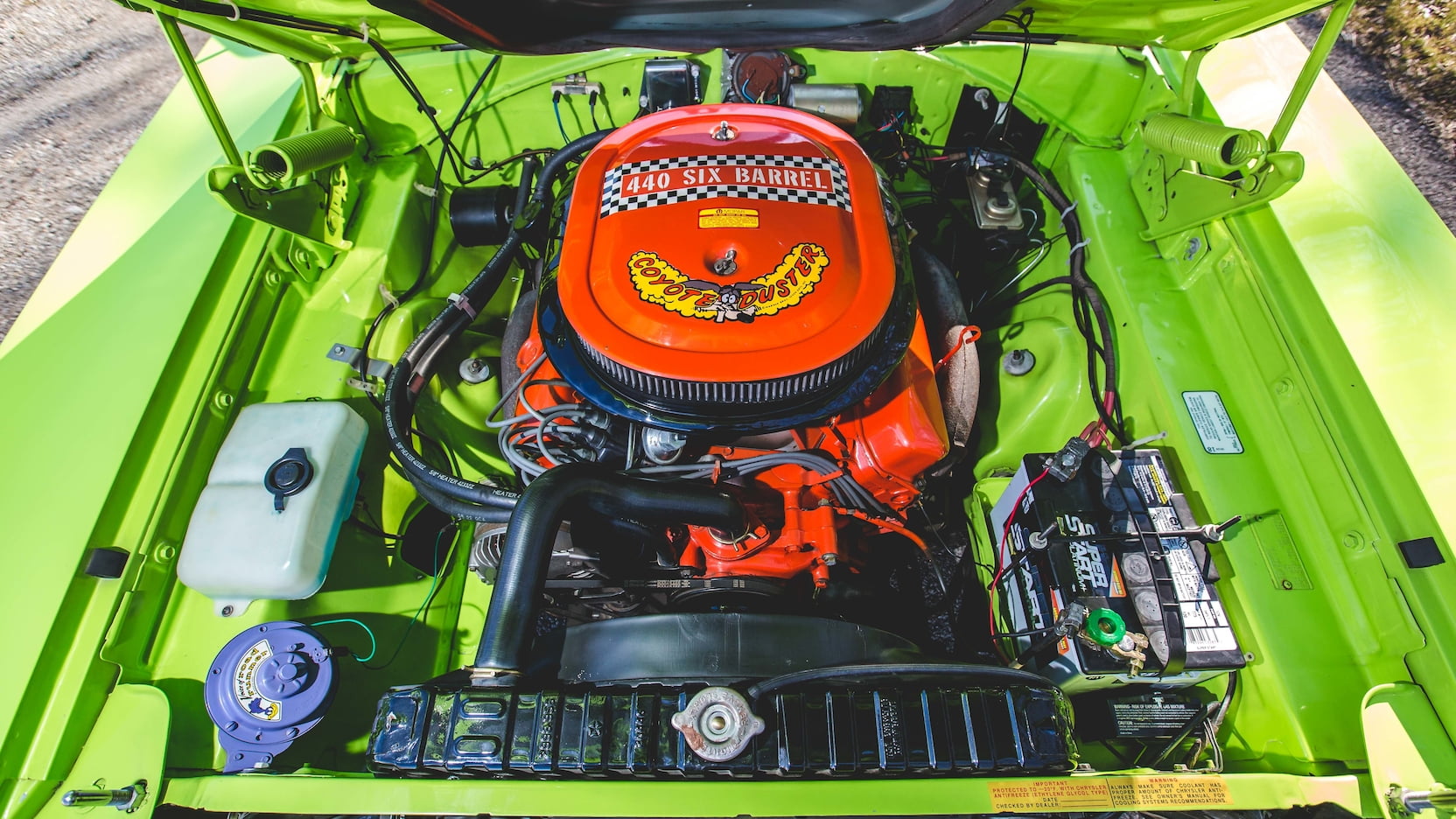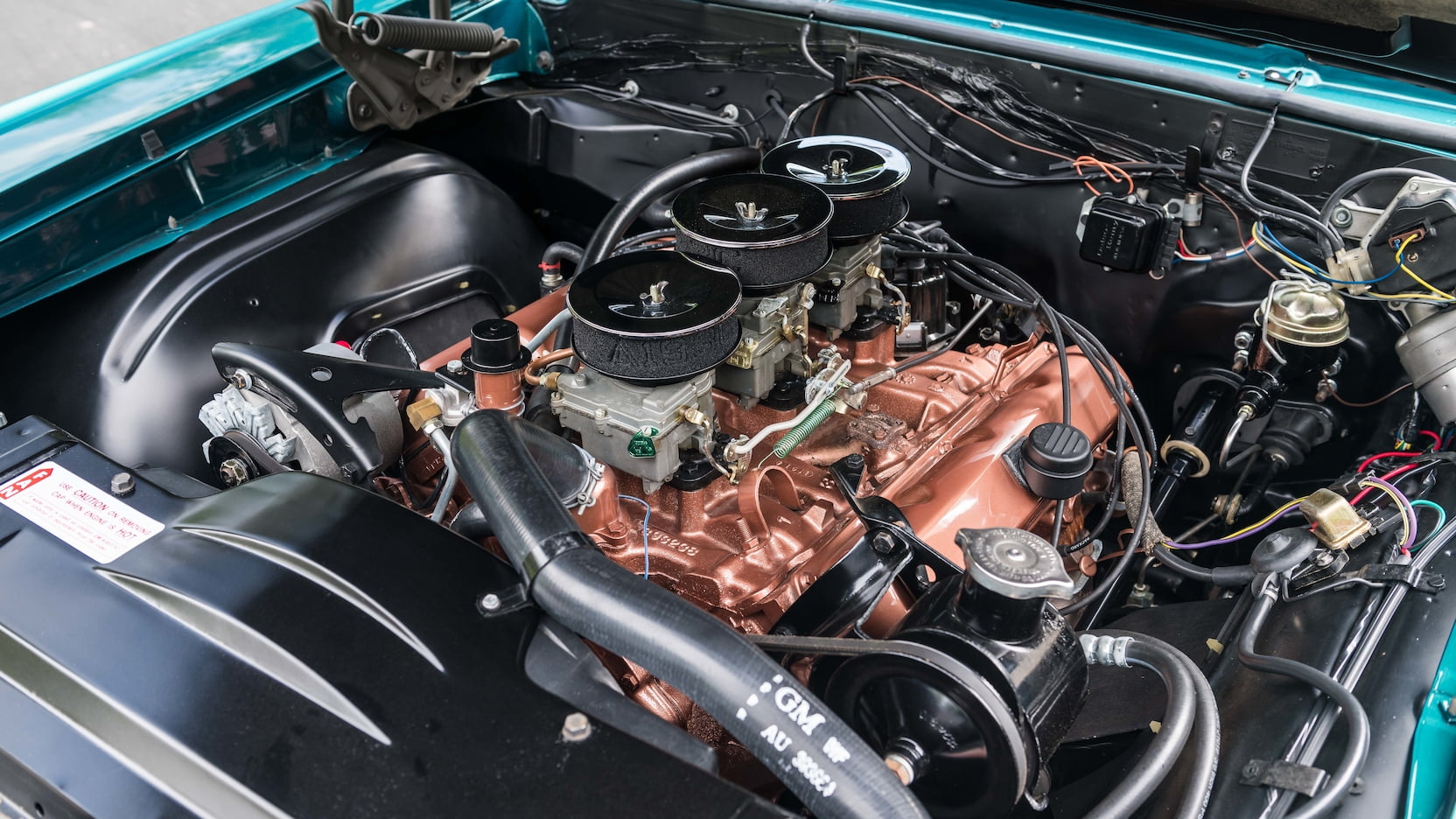Tri-carb induction wasn’t always about the quarter mile
Multiple carburetion has been a part of the automotive landscape even before high-performance cars came into vogue. When the “Horsepower Race” began in 1955, Cadillac, Chrysler, and Packard offered dual-quads with their V-8s. But when horsepower started to be a more populist phenomenon, trickling down to more bread-and-butter brands, tri-carb engines became an alternative multi-carb configuration, perhaps due to economical aspect of running on the center two-barrel.
We tend to associate tri-carb induction with high performance, but the system was not always applied to performance engines. Here’s an overview of both of those variants.
Cadillac

Starting in 1955, the Cadillac Eldorado was available with a 270-horsepower, 331-cubic-inch engine with dual-quads (optional on other Cadillacs). But in 1958, the Eldorado series (now Biarritz, Seville, and Brougham) included a 335-horse 365-cid with three two-barrels. In 1959, the 365 was stroked to 390 cid, with the Eldorado engine now putting out 10 horsepower more. This engine lasted through 1960 in that state of tune upon which Cadillac ditched multiple carburetion.
Chevrolet

In the early days of Chevrolet performance, 3x2s first appeared in 1958 on the all-new 348 big-block. It started at a rather tame 280 horsepower but achieved 315 horses with a mechanical cam and 11.0 compression. Through 1961, Chevrolet offered several pedestrian and high-performance 348s with tri-carbs with up to 350 horsepower.
Chevrolet wouldn’t revisit 3x2s for six more years. In 1967, General Motors banned multi-carbed engines except for the Corvette, so, from 1967–69, the 427 was offered with 400 and 435 horsepower.
Mopar

It could be said that the introduction of the 331 Hemi in 1951 served as the prototype for the horsepower wars that would get up to speed several years later, but it didn’t receive multiple carburetion until 1955 with the Chrysler C-300. But Chrysler didn’t play around with 3x2s until 1969 with the mid-year introduction of the A12 package, which included a 390-horsepower 440 Six Pack (Dodge Super Bee) or 440 six-barrel (Plymouth Road Runner). In 1970, the engine was mainstreamed into most Mopar performance vehicles and lasted through 1971 with a touch less compression. It was slated to appear for the 1972 model year, although only with an automatic. Chrysler cancelled it almost immediately, but not before a handful (probably fewer than 10) made it to the streets.
Chrysler also used 3x2s on the 340 small-block for its limited-edition Trans-Am pony cars, the Dodge Challenger T/A and Plymouth AAR’Cuda.
FoMoCo

Ford introduced a dealer-installed dual-quad package for the 312 in 1956, but didn’t introduce tri-carb induction until 1961 for the new 390. With solid lifters, it put out a resounding 401 horsepower, which was superior to every American manufacturer in 1961. The engine was carried over into 1962 and soon was replaced by a bored version of the same measuring 406 cid—with three two-barrels, it put out 405 horses. It lasted into the 1963 model year until it was replaced mid-year with the 427, which was available with a different induction system.
Full-size Mercurys were also available with the same engines in 1962–63, but its first foray into three two-barrels was with the 1958 Super Marauder 430. As part of the “MEL” engine series introduced the same year, it was the first engine to cross the 400-horsepower threshold. The 430 lasted through 1965 in the Lincoln Continental, but the Super Marauder only appeared in 1958.
Interestingly, the 1962–63 Thunderbird’s 390 was available with 3x2s as an option, but it was not a true high-performance engine like that available in 1961–62 for its full-size Blue Oval brother. Known as the “M-Bird” (due to the engine code in its VIN), it was rated at 340 horsepower.
Oldsmobile

The Rocket Division spearheaded high-compression V-8s, but as the Horsepower Race dawned, Oldsmobile was not at the forefront. The J-2 engine option helped Oldsmobile catch up to others by offering 300 horsepower from three carburetors atop 371 cubic inches. For 1958, power increased to 312 horses, but the restyled Olds was overwrought with excess (although weighing about the same as the ’57s) and wasn’t the stormer the Rocket 88 legend would suggest.
In 1966, Oldsmobile introduced the 360-horse L69 4-4-2 package for the F-85 and Cutlass two-doors. It served as the basis for the W30 package for NHRA racing.
Pontiac

The marque, which famously branded its triple carburetor system Tri-Power, first used the induction system in 1957 on the 347. It was bored to 370 cubic inches in 1958, with 300 horsepower for street cars and 330 horses for “off-road” applications, which was even more than the fancy fuel-injected engine. The 389 debuted in 1959, with Pontiac offering 315 horses for the street and 345 in “420A” tune. Throughout the 1960s, Pontiac offered both pedestrian and performance 389 Tri-Powers for its full-size series, with the last appearing in 1965. And in 1964, a year after the Tri-Power 421 HO was introduced, Pontiac added a non-HO Tri-Power companion available through 1966.
Of course, there also was the GTO, which had a high-performance 389 Tri-Power in several states of tune from 1964–66.

